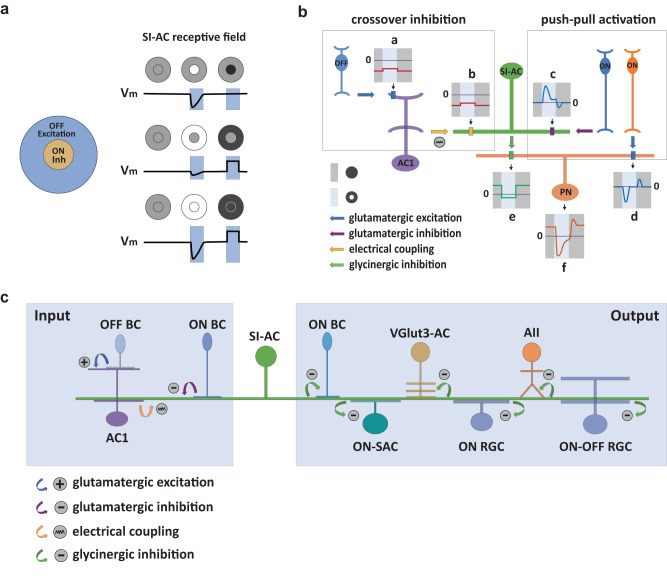Fig. 8. Unusual receptive field of SI-AC allows for crossover inhibition and push-pull activation.
a SI-AC center-surround receptive field organization. SI-AC has a strong inhibitory “ON center” (top panel, middle) with a weak inhibitory “ON surround” (middle panel, middle), and an excitatory “OFF surround” (middle panel, right) without an opposed “OFF center” (top panel, right). Consequently, full-field ON stimulation produces an inhibition composed of both center and surround inhibitions (bottom panel, middle), while full-field OFF stimulation produces an excitation only from the surround (bottom panel, right). b Schematic diagrams of SI-AC mediated OFF to ON crossover inhibition. a OFF bipolar cells are activated by a dark background (OFF, dark gray bar), leading to a tonic inward current (red trace) in the wide-field AC1. The inward current is slightly reduced by a light spot in the center (ON, light blue bar). b AC1 transfers the inward current to SI-AC via an electrical synapse. c A light spot in the dark activates the ON bipolar cell (blue) which produces a large outward current at ON and a small inward current in OFF (blue trace) in the SI-AC via sign-inverting mGluR8 receptors. d The same (blue) or a different (orange) bipolar cell produces a large inward current at ON and a small outward current in OFF in neurons (PN) postsynaptic to the SI-AC. e Currents from AC1 (b) and ON bipolar cells (c) combine in the SI-AC to gate a Ca2+ conductance that leads to a tonic suppression in glycine release and an outward current during OFF and an inward current during ON in the postsynaptic neuron. f The currents from SI-AC (e) and ON bipolar cells (d) combine in the postsynaptic neuron, resulting in an enhanced inward current during ON together with a large outward current during OFF. c Model of SI-AC circuitry. In the dark, OFF bipolar cells depolarized SI-AC via a bistratified AC at electrical synapses. Glycine released by SI-AC inhibits ACs (AIIs, VGlut3-ACs), ON-RGCs, and ON-OFF RGCs. A spot of light hyperpolarizes SI-AC via mGluR8, relieving the inhibition and increasing the excitability of postsynaptic neurons that respond during light.

